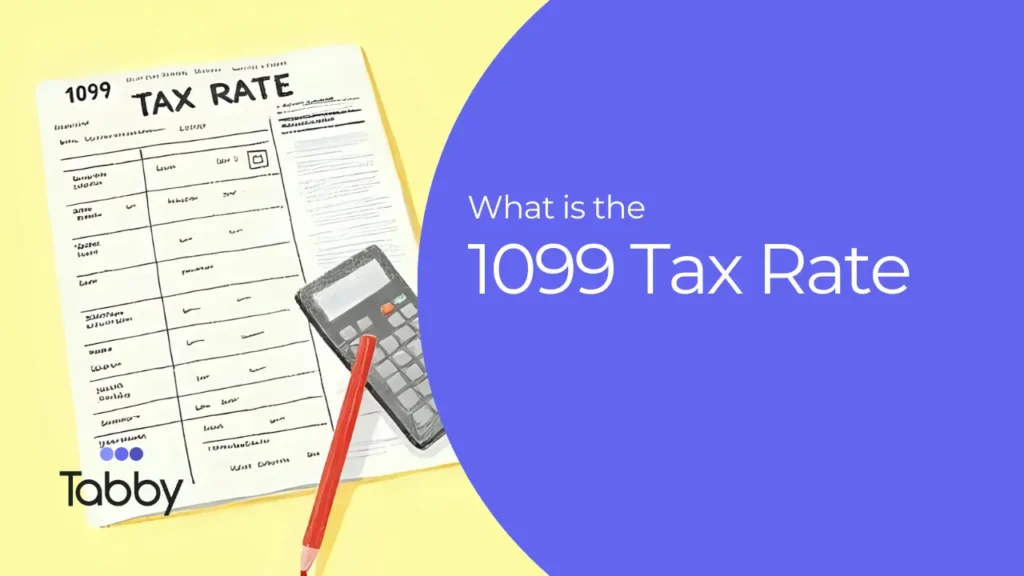
One of the first questions I hear from freelancers, side hustlers, and small business owners is: “So what’s the 1099 tax rate?”
And here’s the honest answer: there isn’t one simple number. There’s no flat “1099 tax rate” that applies to everyone. It depends on your income, where you live, and how much you set aside. But there are a couple of things that almost every freelancer has to deal with.
When you get a 1099 form, it feels nice because the whole amount hits your bank account. No taxes taken out. But that also means you’re on the hook for everything. Unlike a W-2 paycheck, there’s no employer splitting the costs with you.
Here’s what you’re actually paying:
When you add it up, most people end up in the 25–30% range on their 1099 income.
So, how do you actually figure out what your 1099 tax rate looks like? It’s not as complicated as it sounds once you break it down.
This part covers Social Security and Medicare. Since you’re both the employer and the employee when you freelance, you’re responsible for the full amount.
This depends on how much you make in total for the year. For tax year 2025, the federal brackets range from 10% (for taxable income up to $11,925 for singles) to 37% (over $626,350), adjusted for inflation. The rates start around 10 percent and go up as your income increases.
If you live in a state with income tax, you’ll need to include that too. States like Texas or Florida don’t have one, but places like California or New York do.
Let’s say you earn $50,000 from freelance work. You’ll pay 15.3 percent in self-employment tax, plus your federal income tax, and possibly state taxes. Altogether, most people in this range end up paying about 25 to 30 percent in total taxes on their 1099 income.
This is the part that frustrates me the most.
People get into freelancing, consulting, rideshare, or any side hustle, and no one explains that you’re supposed to put away 25–30% right off the top. They see that money as “theirs” because it comes in clean no withholdings.
Then April rolls around, they hand me a stack of 1099s, and their jaw drops when I tell them what they owe. Recent surveys highlight this: failing to make quarterly estimated payments is the #1 tax mistake among freelancers in 2025, affecting up to 50% of new gig workers and leading to average penalties of $500+.
I had a driver who made around $45,000 one year and didn’t set aside a dime. Tax bill came to about $12,000. He had no way to pay it, ended up on a payment plan with the IRS, and carried that stress for years.
The best system is simple: every time you get paid, set aside 25–30%. Treat it like it’s not yours. Put it in a separate savings account, somewhere you won’t touch it.
It’s painful at first, but when tax season comes, you’ll thank yourself.
Another thing most people don’t know: the IRS doesn’t actually want to wait until April. If you owe more than $1,000 in taxes for the year, they expect quarterly estimated tax payments.
Deadlines are:
If you don’t pay throughout the year, they hit you with penalties. I’ve seen people get smacked with hundreds of dollars extra just because they didn’t know.
Paying your taxes isn’t complicated once you know where to go. You can make estimated payments directly on the IRS website through the IRS Direct Pay system. It’s free and goes straight to your account.
If you prefer, you can also:
Always keep a record of your payments and confirmation numbers. That way, if anything ever gets questioned, you have proof ready to go.
The key is consistency. Make your quarterly payments on time, and you’ll avoid penalties and the stress of a giant tax bill in April.
All of this is hard to keep track of, I know. That’s why I built Tabby.
Tabby does a few things freelancers need:
It doesn’t make taxes go away, but it stops you from being blindsided. That’s the whole point. Try Tabby free and see how much stress it takes off your plate.
There’s no magic “1099 tax rate.” But if you remember this: income tax + 15.3% self-employment tax, you’re ahead of the game.
The real key is building a system that keeps you ready. Whether you use envelopes, spreadsheets, or an app like Tabby, don’t wait until April to find out what you owe. That’s how people get burned.
It’s not one number. It’s your federal income tax + 15.3% self-employment tax, plus state tax if applicable.
Rule of thumb: 25–30% of every dollar you earn.
Yes, if you owe more than $1,000 for the year, the IRS expects it.
By tracking your income, estimating your taxes, and giving you clean reports so you don’t panic at tax time.